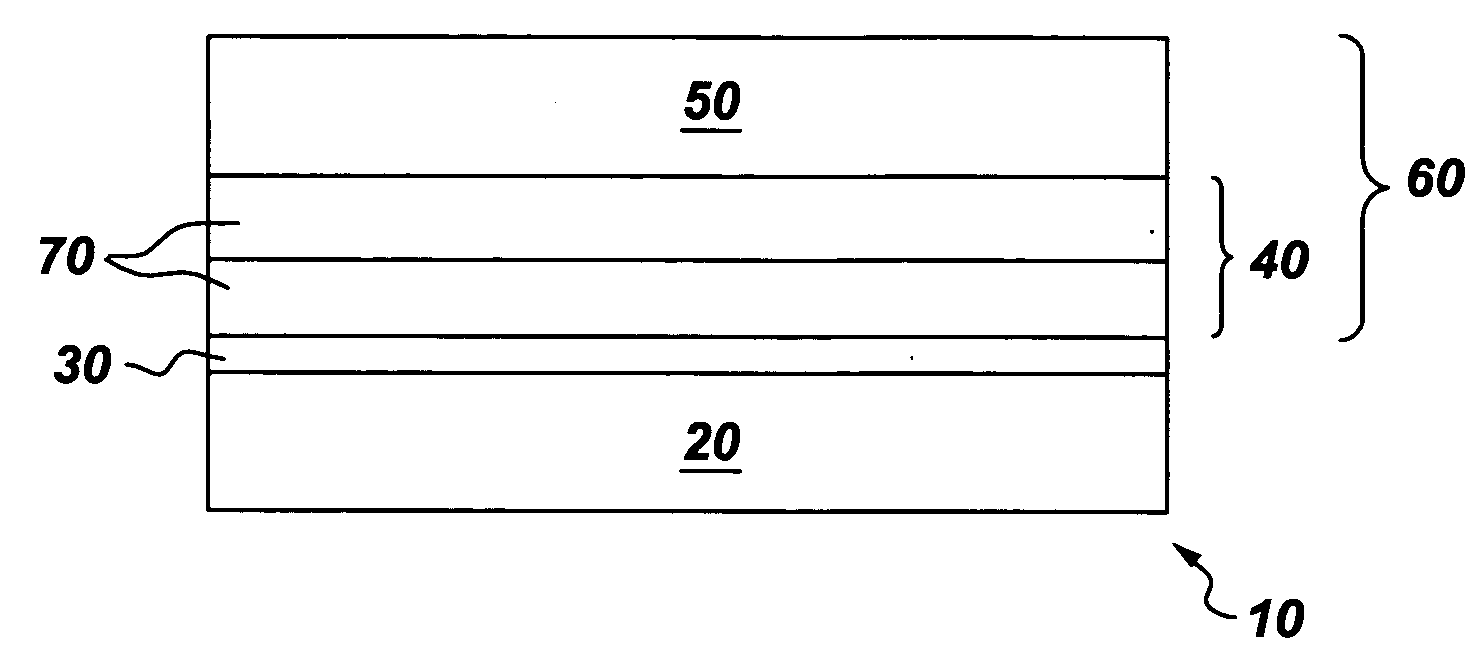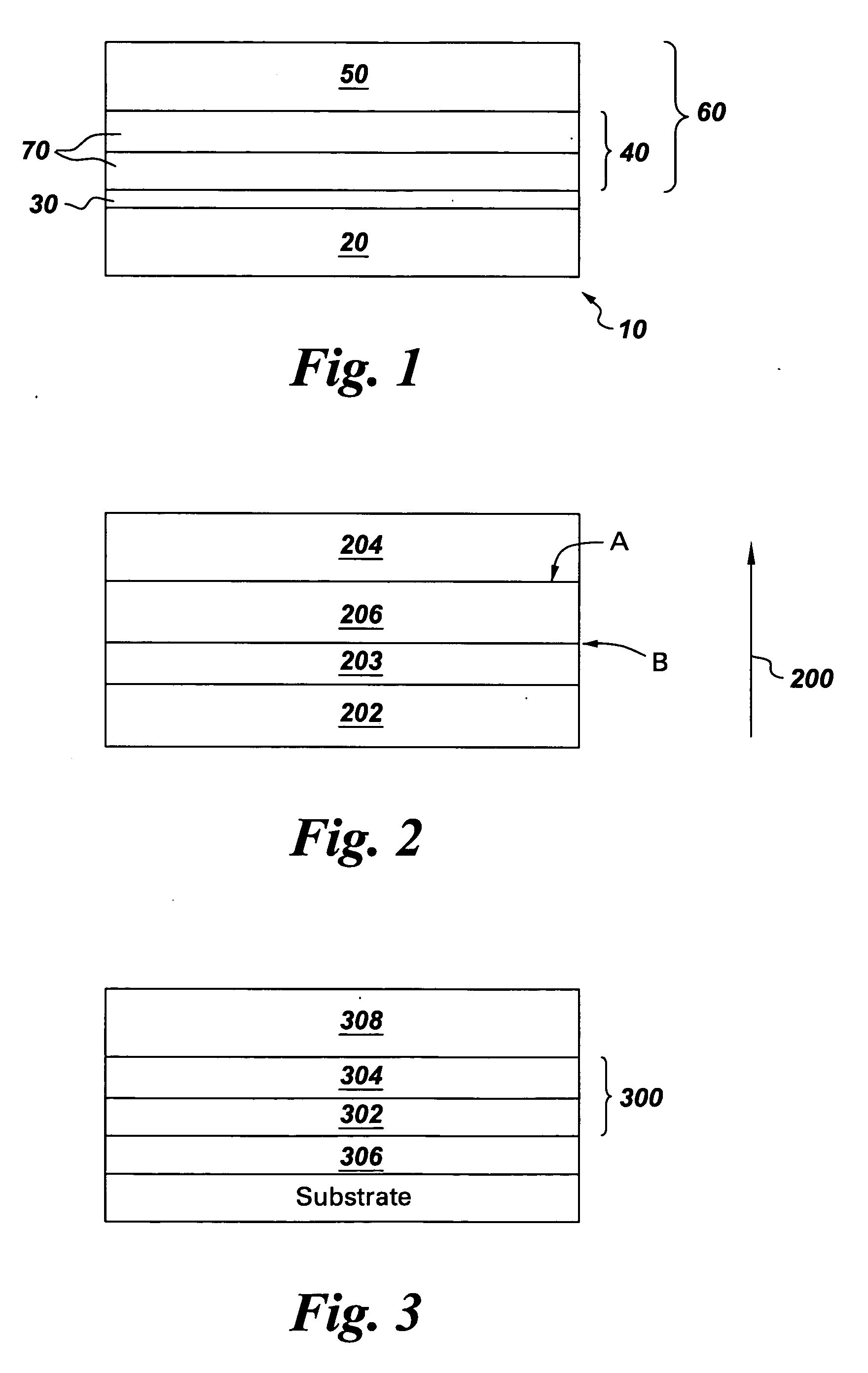Article including environmental barrier coating system, and method for making
a technology of environmental barrier and coating system, applied in the direction of superimposed coating process, machine/engine, natural mineral layered products, etc., can solve the problems of significant surface recession and mass loss of silicon-bearing materials, unacceptably high recession ra
- Summary
- Abstract
- Description
- Claims
- Application Information
AI Technical Summary
Benefits of technology
Problems solved by technology
Method used
Image
Examples
example 1
[0026] A coating system was applied to a SiC / SiC ceramic matrix composite (CMC) substrate by an air plasma spray technique. The CMC surface was prepared by grit-blasting with 36 grit SiC particles. First, a silicon bondcoat about 75 micrometers thick was applied to the substrate. Next, a yttrium disilicate (Y2Si2O7) intermediate barrier about 125 micrometers thick was deposited on top of the bondcoat. Finally, a top coat of yttrium monosilicate(Y2SiO5) 125 micrometers thick was deposited on the intermediate barrier. The coated substrate was heat treated for 10 hours at 1300 C in static air. X-ray diffraction showed the top coat consisted of crystalline yttrium monosilicate and the intermediate layer consisted of crystalline yttrium disilicate.
example 2
[0027] The coating deposition process described in Example 1 was followed with one modification. The intermediate layer in this example contained a mixture of yttrium monosilicate and yttrium disilicate. After exposure for 500 hours at 2400 F in air, an oxide layer was observed to have grown on the bond coat surface due to silicon oxidation. SEM / EDX analysis confirms the grown oxide layer was pure silica, SiO2. There was no evidence of chemical reaction between the silica layer and the intermediate layer, demonstrating excellent interlayer chemical compatibility.
example 3
[0028] Bulk pellets of barium strontium aluminosilicate (BSAS—a conventional EBC material), yttrium monosilicate, lutetium monosilicate, and ytterbium monosilicate were produced by cold pressing and sintering. The sintered samples were exposed to a water-vapor rich environment (90% H2O-10% O2 atmosphere) at 1315° C. for 100 hours. The BSAS samples lost weight due to interaction with steam and subsequent volatilization of silica in the form of gaseous silicon hydroxide. On the other hand, none of the rare earth monosilicate samples lost weight, suggesting that coatings made of these materials would show good stability in steam. XRD analysis revealed no loss of silica or rare earth oxide after steam exposure, confirming little, if any, reaction with steam.
PUM
| Property | Measurement | Unit |
|---|---|---|
| Temperature | aaaaa | aaaaa |
| Temperature | aaaaa | aaaaa |
| Temperature | aaaaa | aaaaa |
Abstract
Description
Claims
Application Information
 Login to View More
Login to View More - R&D
- Intellectual Property
- Life Sciences
- Materials
- Tech Scout
- Unparalleled Data Quality
- Higher Quality Content
- 60% Fewer Hallucinations
Browse by: Latest US Patents, China's latest patents, Technical Efficacy Thesaurus, Application Domain, Technology Topic, Popular Technical Reports.
© 2025 PatSnap. All rights reserved.Legal|Privacy policy|Modern Slavery Act Transparency Statement|Sitemap|About US| Contact US: help@patsnap.com


